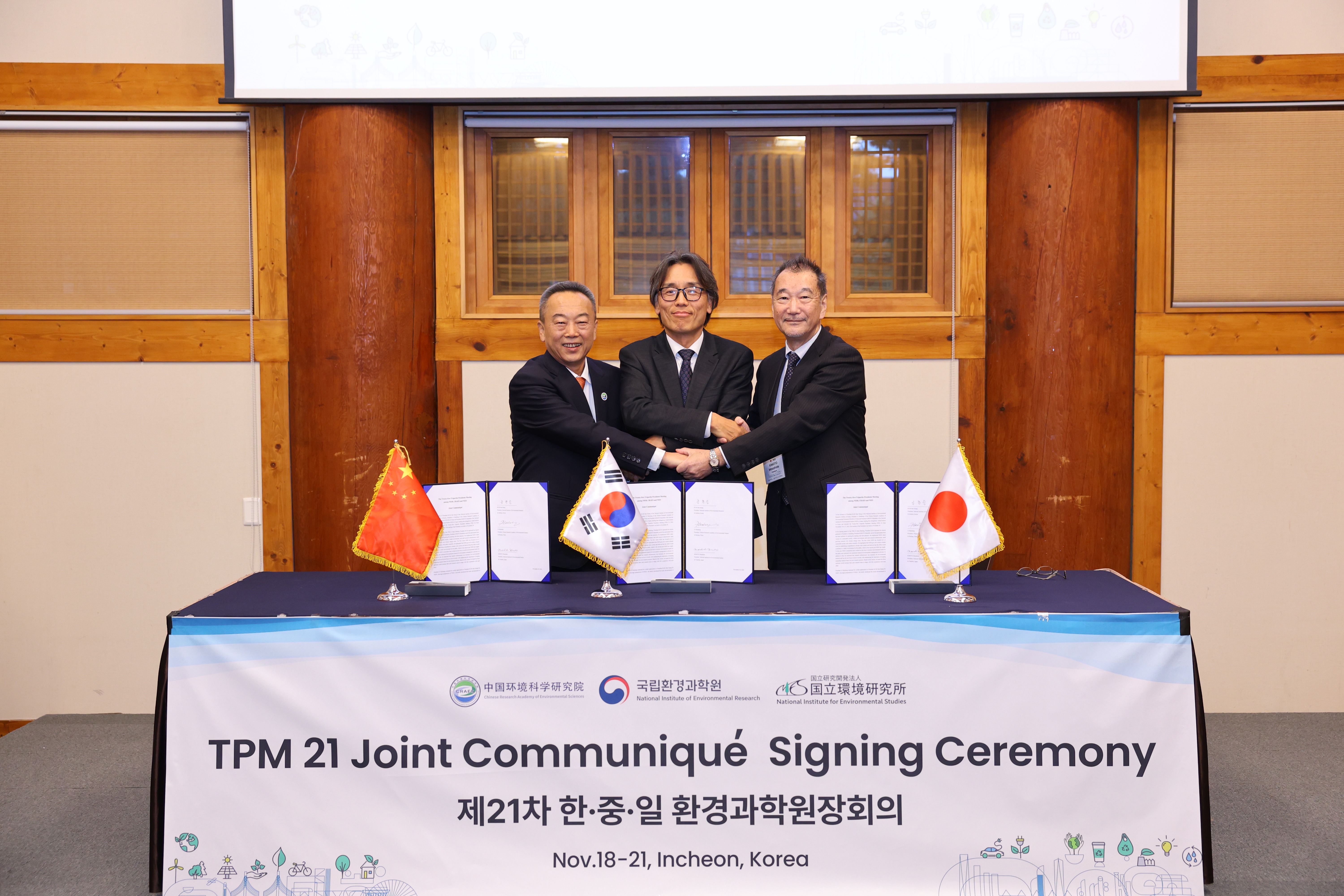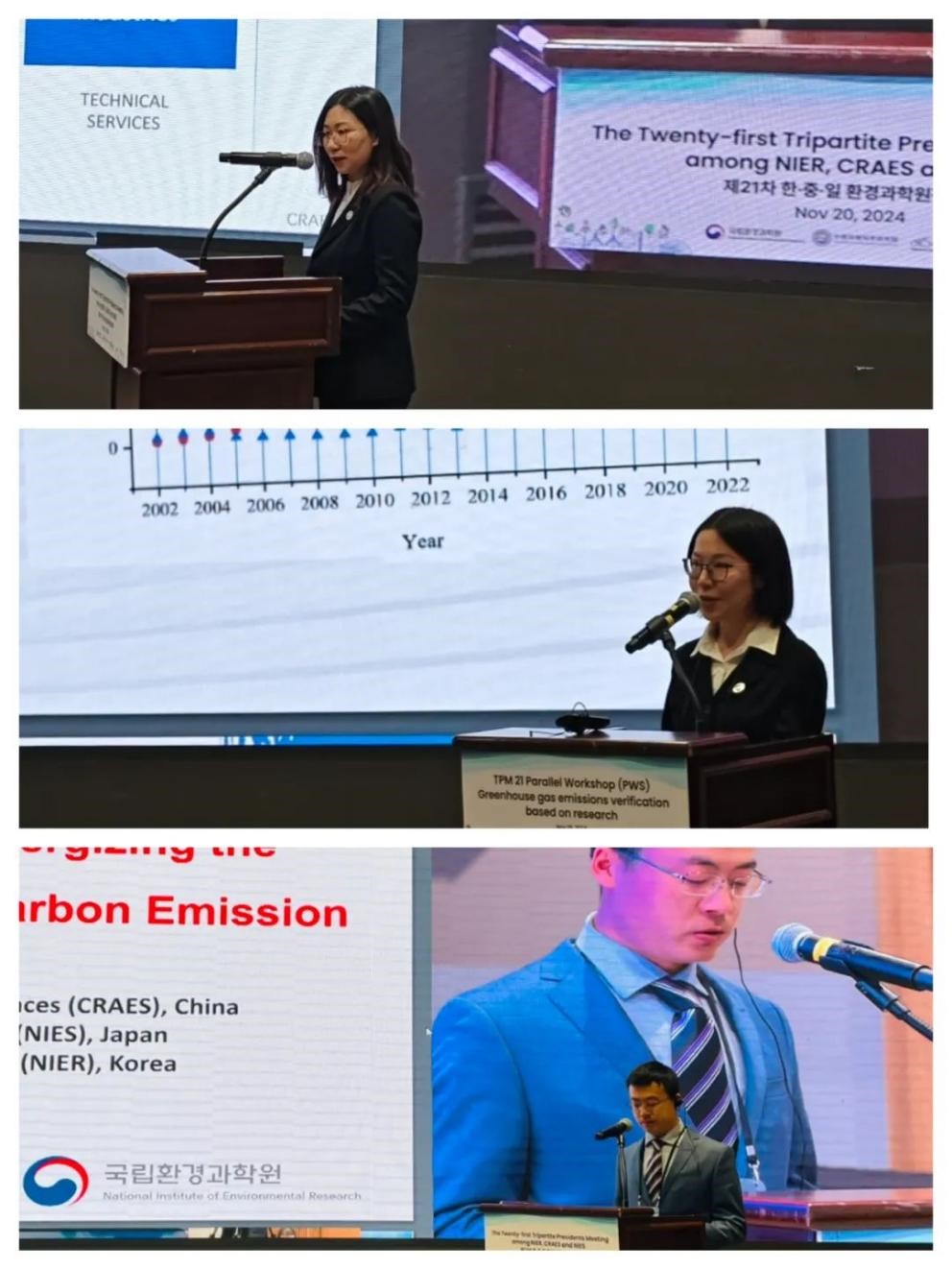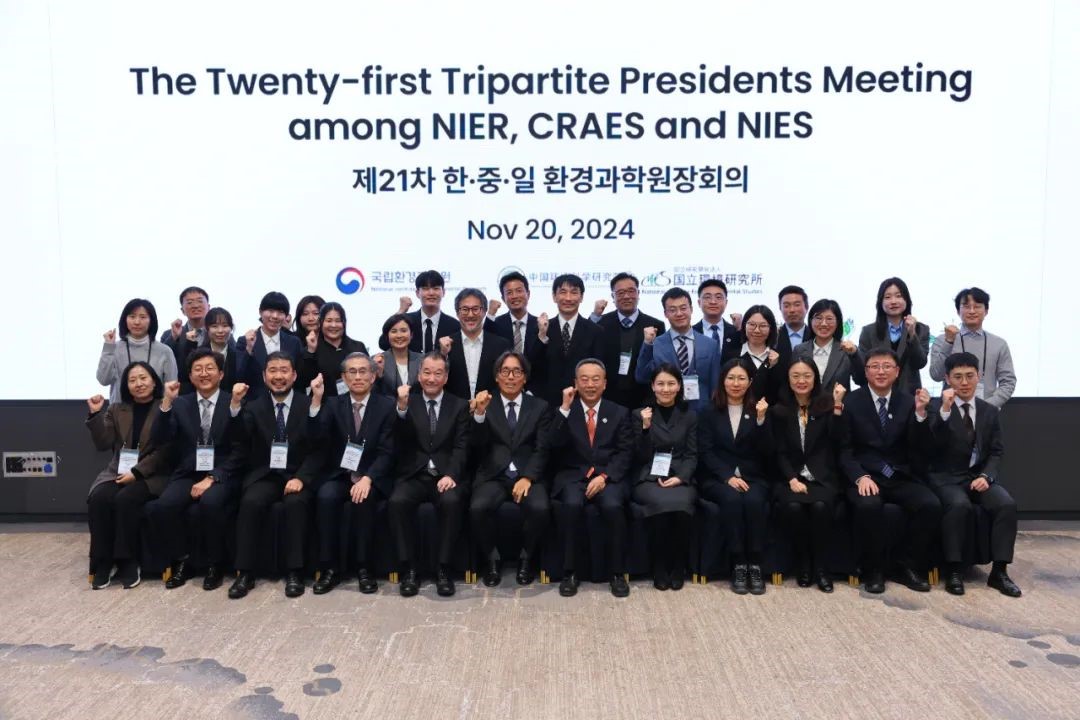
The 21st Tripartite Presidents Meeting (TPM 21) among the Chinese Research Academy of Environmental Sciences (CRAES), the National Institute for Environmental Studies (NIES) of Japan, and the National Institute of Environmental Research (NIER) of ROK was held from November 19 to 20 in Incheon, ROK. CRAES’s President Li Haisheng, NIES’s President Kimoto Masahide, and NIER’s President Kum Hanseung attended the meeting with their delegations. The three institutes presented their latest progress on environmental research, and exchanged views on environmental issues of global concern. The meeting was hosted by NIER in hybrid with both online and on-site attendance.

At the opening of TPM 21, Li Haisheng highlighted China’s substantial contribution to global emission reduction efforts, biodiversity conservation and the enhancement of ecosystem carbon sink capacities, including steady progress in advancing dual carbon goals of peaking carbon emissions and achieving carbon neutrality especially in the renewable energy sector, and has contributed approximately one-quarter of the world's total new green area over the past two decades.
Li emphasized that CRAES has explored a whole-of-nation approach to tackle key technological challenges for eco-environmental protection. Our work has provided robust technological support for major national strategies such as the coordinated development of the Beijing-Tianjin-Hebei region, the ecological conservation of the Yangtze River, and the high-quality development of the Yellow River, and facilitated the Beautiful China initiative. Additionally, we have forged partnerships worldwide and significantly increased our global influence on the way to growing into an internationally renowned institute dedicated in environmental research.
Li said that since the establishment of the TPM mechanism, CRAES, NIES, and NIER have continuously built consensus, strengthened collaboration, and steadily expanded exchange and cooperation in areas such as air pollution control, water environment management, and environmental health. This has provided technological support for the ecological and environmental governance in the Northeast Asia region.
He expressed CRAES’s willingness to deepen practical cooperation with NIES and NIER, and continue to leverage the TPM mechanism as a bridge to further strengthen talent exchange and training, intensify the development of cutting-edge green and low-carbon technologies, and enhance technological innovation capabilities, so as to keep bolstering global environmental governance towards green, low-carbon economic and social development with technological advancements.
NIES President Kimoto Masahide and NIER President Kum Hanseung each delivered a keynote speech, and put forth suggestions and expressed hopes for future collaboration. The three sides separately reported on their research achievements in potential cooperation areas, including climate change response, air pollution control, water environment, and environmental health risk assessment. A parallel workshop on “Greenhouse Gas Emission Verification Based on Research” was held during the meeting, where greenhouse gas monitoring technologies and emission control measures were discussed.

Representatives from China, Japan, and ROK had a study visit to ROK’s National Air Pollution Monitoring Center, the Automotive Car Testing Building, and Environmental Satellite Center. After the meeting, the presidents of CRAES, NIES and NIER signed the “TPM 21 Joint Communiqué”.

The TPM mechanism was initiated by CRAES in 2004 on the principle of “friendship, communication, cooperation, and mutual benefits”. It has since evolved into an important platform for scientific research exchange, practical cooperation, mutual learning, and win-win collaboration among the environmental science research institutes of China, Japan, and ROK.